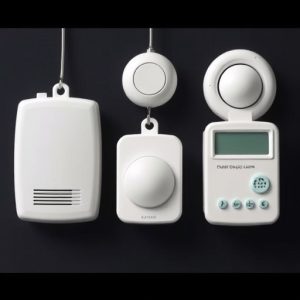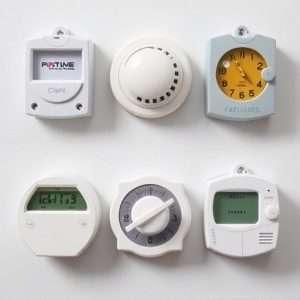Personal Safety Alarms: Wearable Powerhouses with Panic Buttons
Wearable security systems, especially rechargeable personal safety alarm devices, are transforming i…….
Wearable security systems, especially rechargeable personal safety alarm devices, are transforming individual defense with their discreet power and ease of use. These compact gadgets offer peace of mind during everyday activities by deterring threats and quickly attracting assistance via alarms. With sustainable battery technology, users can conveniently charge these devices on-the-go, ensuring they're always prepared to protect themselves. Panic features provide immediate help in emergencies, making them crucial life-saving tools. The design has evolved for comfort and discreet wear, while legal considerations around data privacy and usage remain critical as these devices become more integrated into daily life.
Wearable security systems equipped with panic features are transforming personal defense, offering a discrete yet powerful safety net. These innovative devices, powered by rechargeable batteries, provide peace of mind in various settings. From everyday carry to outdoor adventures, they serve as life-saving tools. This article explores the intricacies of wearable security, from understanding their technology and power sources to assessing legal implications and user privacy concerns, with a focus on the importance of rechargeable personal safety alarm devices.
- Understanding Wearable Security Systems: A Personal Defense Revolution
- The Role of Rechargeable Batteries: Powering Your Safety
- Panic Features: Essential Life-Saving Tools
- Design and Comfort: Wearing Safety Without Discomfort
- Legal Implications and User Privacy Considerations
Understanding Wearable Security Systems: A Personal Defense Revolution
Wearable security systems, equipped with panic features, represent a revolutionary shift in personal defense. These compact and versatile devices allow individuals to protect themselves discreetly and effectively in various situations. By integrating advanced technology into wearable forms like bracelets or pendants, users can trigger alarms that deter potential threats and attract assistance swiftly.
Rechargeable personal safety alarm devices offer added convenience and sustainability. They are designed to be easily portable, providing peace of mind without compromising mobility. With a simple press of a button, these wearables emit loud sounds, flashing lights, or even send alerts to emergency contacts, ensuring rapid response times in case of distress. This technology empowers individuals to take control of their safety while navigating everyday life, whether traveling alone or attending social events.
The Role of Rechargeable Batteries: Powering Your Safety
Wearable security systems, like rechargeable personal safety alarm devices, have revolutionized personal safety. One of their key components is rechargeable batteries, which offer numerous advantages over traditional non-rechargeable alternatives. These batteries not only ensure that users are never left stranded due to drained power but also promote sustainability by reducing the need for frequent battery replacements.
Rechargeable personal safety alarm devices can operate continuously for extended periods, providing peace of mind during emergencies. Their rechargeable nature allows users to conveniently charge them at home or on the go, ensuring they’re always ready to activate the alarm with a simple press of a button. This feature is particularly valuable in situations where quick response times are crucial, making these devices an essential addition to any individual’s personal safety toolkit.
Panic Features: Essential Life-Saving Tools
Panic features in wearable security systems are essential life-saving tools that can provide immediate assistance during emergencies. These devices, often equipped with rechargeable personal safety alarm functionality, offer a sense of security and peace of mind for users in various situations. When activated, they emit loud alarms, attracting attention and signaling distress, potentially deterring assailants or prompting bystanders to intervene.
Rechargeable Personal Safety Alarm Devices are particularly valuable due to their longevity and convenience. Users can rest assured that their safety alarm will remain operational without frequently replacing batteries, making them ideal for long-term use. This reliability is crucial in situations where every second counts, ensuring that the device is always ready to activate when needed.
Design and Comfort: Wearing Safety Without Discomfort
The design and comfort of wearable security systems, particularly those with panic features, have evolved significantly to ensure users can stay safe without sacrificing everyday convenience or style. Modern devices prioritize ergonomic designs that allow for long-term wear without causing discomfort, making them accessible for a wide range of users. Lightweight materials, adjustable bands, and sleek profiles are integral to these innovations, enabling individuals to carry personal safety alarm devices discreetly under clothing.
Rechargeable personal safety alarm devices have been a game-changer in this space. They eliminate the need for frequent battery replacements, providing continuous protection without the hassle of constant charging. This feature not only enhances convenience but also encourages consistent use, ensuring users can rely on their devices when needed most. Such devices are designed to be easily accessible—a quick press of a button triggers an alarm that attracts attention and sends alerts to pre-selected contacts, all while keeping the wearer comfortable throughout the process.
Legal Implications and User Privacy Considerations
The introduction of wearable security systems with panic features has brought about significant advancements in personal safety, but it also raises important legal and privacy concerns. As users adopt these devices, such as rechargeable personal safety alarm devices, for self-protection, the data collected by these wearables – including location, biometric information, and emergency triggers – becomes a valuable yet sensitive resource.
Legal implications vary across jurisdictions, with different countries having distinct regulations regarding data privacy, surveillance, and the use of panic-related technologies. Manufacturers and developers must adhere to strict guidelines to ensure user consent, secure data storage, and transparent practices in handling personal information. Striking a balance between providing effective panic features and respecting individual privacy is paramount to fostering public trust in these innovative wearable security systems.
Wearable security systems with panic features represent a significant advancement in personal defense, empowering individuals to protect themselves effectively. As technology evolves, particularly in rechargeable personal safety alarm devices, these tools become more accessible and reliable. While legal implications and user privacy considerations must be addressed, the benefits of such innovations cannot be overlooked. By prioritizing comfort and design, wearables offer a discreet yet powerful means of ensuring safety, making them valuable additions to modern life.


